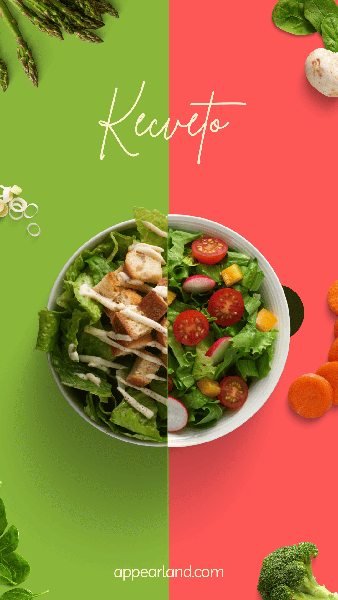Kecveto – Unlocking The Culinary Treasure!

In today’s fast-paced world, where environmental sustainability and personal well-being are paramount, Kecveto is a culinary treasure encompassing these values.
This traditional dish, deeply rooted in Hungarian and Turkish culinary heritage, not only delights the palate but also nourishes the body and supports a holistic lifestyle.
Let’s explore the rich history, unique ingredients, traditional preparation methods, and health benefits of Kecveto, Taking us into its cultural significance.
Table of Contents
What Is Kecveto? – A Comprehensive Guide!
Kecveto is a traditional Hungarian and Turkish stew renowned for its rich, savoury flavours and hearty texture. This delectable dish typically features a blend of tender meats, such as beef, lamb, or pork, combined with an assortment of fresh vegetables, including bell peppers, onions, carrots, and tomatoes.
The ingredients are slow-cooked together with a medley of aromatic spices like paprika, cumin, and garlic, creating a deeply flavorful and comforting meal that has been cherished for generations.
Often served with bread or rice, Kecveto is more than just a stew; it is a symbol of cultural heritage and culinary artistry. It was initially prepared as a nutritious and filling meal for soldiers.
Over time, it evolved into a beloved household staple across Hungary and Turkey, reflecting the region’s rich culinary traditions. The slow-cooking method used in Kecveto not only enhances its flavours but also ensures that the meat becomes incredibly tender.
Whether enjoyed as a family meal or served during special gatherings, Kecveto embodies the essence of comfort food, bringing warmth and satisfaction to all.
History Of Kecveto – A Tale Of Cultural Heritage!
The history of Kecveto spans centuries, with its origins rooted in the culinary traditions of Hungary and Turkey.
This beloved stew, known for its rich flavors and hearty ingredients, has its roots in the Ottoman Empire, where it was originally prepared as a nourishing meal for soldiers.
Over time, Kecveto evolved into a cherished dish enjoyed by people across the region, symbolizing warmth, comfort, and cultural heritage.
If you’re intrigued by the rich history and tantalizing flavors of Kecveto, why not explore its culinary delights yourself? Experience the time-honored tradition of this iconic stew and savor its delicious flavors that have stood the test of time. Join us on a journey through history with every hearty spoonful of Kecveto.
Health Benefits And Nutritional Value – Nourish Your Body With A Bowl Of Kecveto!
Rich in Protein:
Kecveto is packed with high-quality protein from meats like beef, or lamb.
Abundant in Vitamins and Minerals:
This traditional stew contains various vegetables like onions, tomatoes, and bell peppers, which provide essential vitamins like vitamin C, vitamin A, and minerals like potassium and magnesium, supporting immune function, vision, and heart health.
Source of Dietary Fiber:
With the inclusion of vegetables and whole grains like rice or bread, Kecveto is rich in dietary fibre, promoting digestive health.
Packed with Antioxidants:
The aromatic spices used in Kecveto, such as paprika, garlic, and cumin, are rich in antioxidants, helping to reduce inflammation, combat oxidative stress, and lower the risk of chronic diseases.
Balanced Nutrition:
Kecveto offers a well-rounded nutritional profile, combining protein, carbohydrates, and fats in a balanced way, providing sustained energy and satiety to keep you feeling full and satisfied.
Journey Through Hungarian And Turkish Heritage – Rich Culinary!
Cultural Significance:
Explore how Kecveto holds cultural significance in Hungarian and Turkish communities, not just as a dish but as a symbol of heritage, tradition, and shared experiences.
Regional Variations:
Discuss the different regional variations of Kecveto, highlighting how ingredients and preparation methods may vary based on local customs, ingredients availability, and personal preferences.
Versatility in Modern Cuisine:
Highlight how Kecveto has evolved over time to adapt to modern culinary trends, such as vegan or vegetarian versions, fusion dishes, and innovative presentations in upscale restaurants.
Family Traditions:
Share anecdotes or stories about how Kecveto recipes have been passed down through generations within families, emphasizing the role of food in preserving cultural identity and fostering familial bonds.
Celebratory Dish:
Explore how Kecveto is often served during festive occasions, weddings, and family gatherings, symbolizing abundance, hospitality, and communal celebration.
Health Consciousness:
Discuss the growing awareness of health-conscious eating and how Kecveto fits into modern dietary trends, such as its alignment with paleo, keto, or Mediterranean diets due to its natural, nutrient-rich ingredients.
Ethical and Sustainable Practices:
Highlight the importance of ethical sourcing of ingredients and sustainable cooking practices in Kecveto preparation, reflecting a broader global movement towards environmentally friendly food production.
Cooking Traditions:
Delve into traditional cooking methods for Kecveto, such as using clay pots or open-fire cooking, and how these techniques contribute to the unique flavor profile of the dish.
Culinary Tourism:
Explore the role of Kecveto in culinary tourism, attracting food enthusiasts from around the world to experience authentic flavors and cultural immersion in Hungary and Turkey.
Future Trends:
Speculate on the future of Kecveto in the culinary landscape, considering factors such as globalization, changing food preferences, and emerging technologies that may influence its popularity and evolution.
Frequently Asked Questions:
Is Kecveto a healthy option for a balanced diet?
Yes, Kecveto can be a healthy addition to a balanced diet when prepared with fresh, wholesome ingredients and served in moderation.
What are some common side dishes served with Kecveto?
Kecveto is often served with bread or rice to soak up the flavorful broth. Additionally, it pairs well with a variety of side dishes such as salads, pickled vegetables, or yogurt-based dips.
Is Kecveto suitable for vegetarians or vegans?
Although meat is a common ingredient in traditional Kecveto recipes, they can easily be modified for vegetarian or vegan diets by simply excluding the meat and replacing it with vegetable broth.
Conclusion:
Experience the vibrant cultural legacy and gastronomic pleasures of Kecveto, a beloved dish known for its rich flavors and wholesome components. Incorporating Kecveto into your regular diet can enhance your stamina, well-being, and overall wellness. This superfood is rich in vitamins, minerals, antioxidants, and essential nutrients that can make a real difference in how you feel.
By harnessing the power of premium organic components and a strong dedication to sustainability, Kecveto enables you to seize command of your health and overall wellness. Integrate Kecveto into your everyday regimen and witness firsthand the remarkable advantages it brings.



